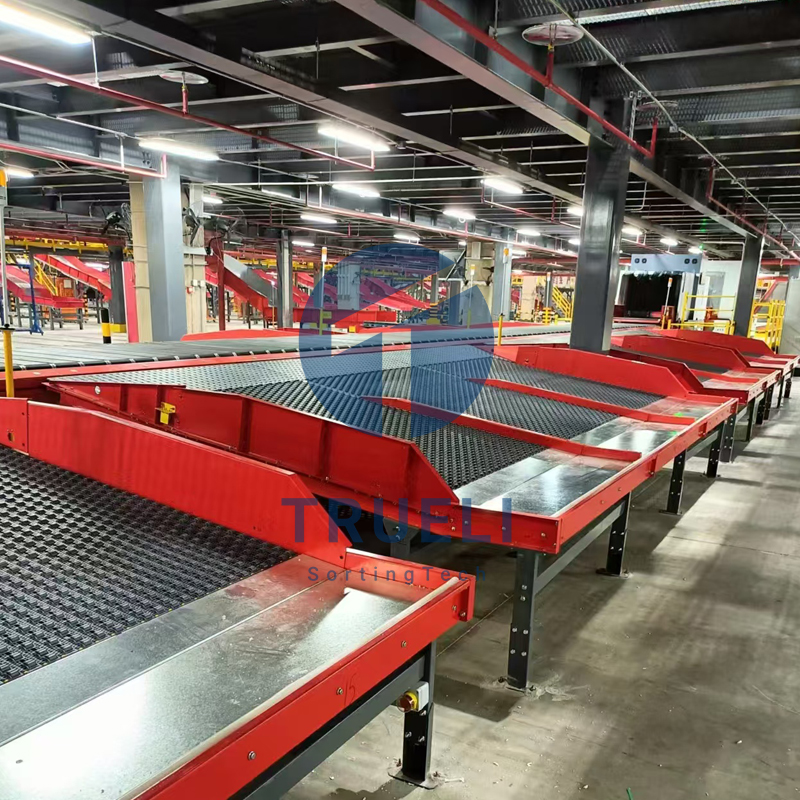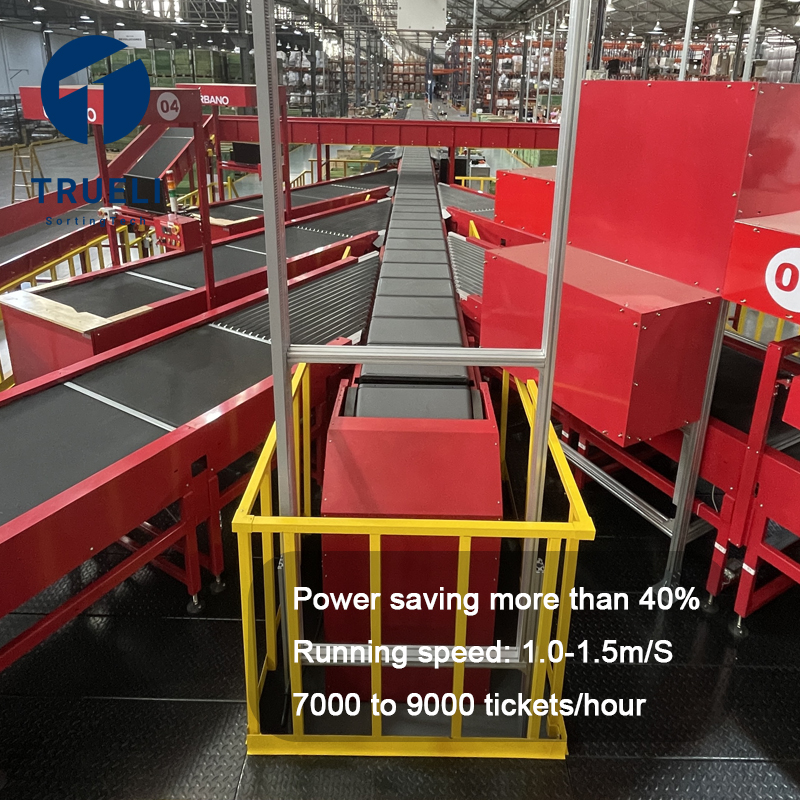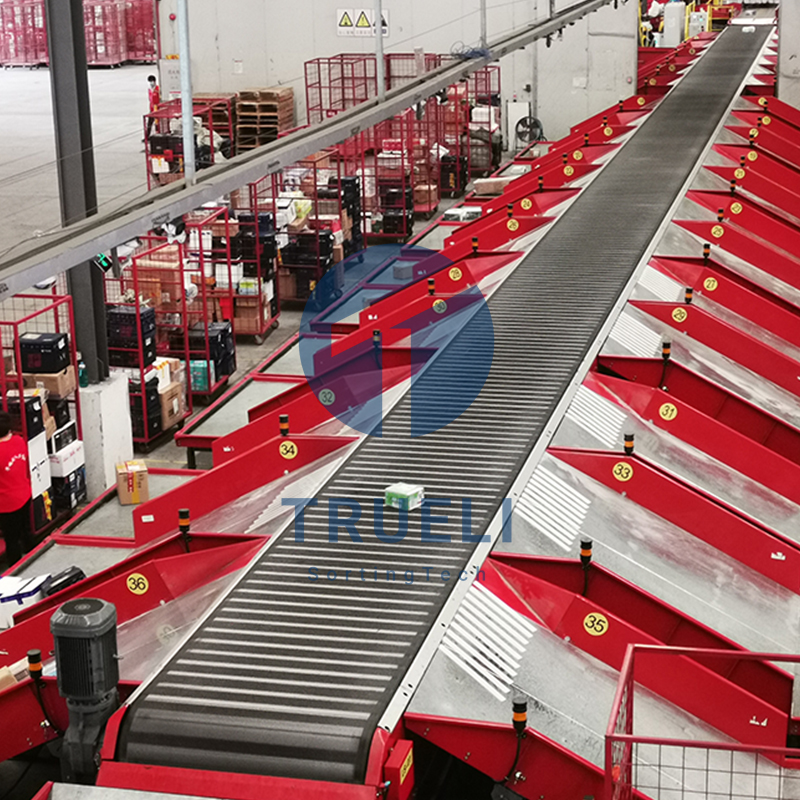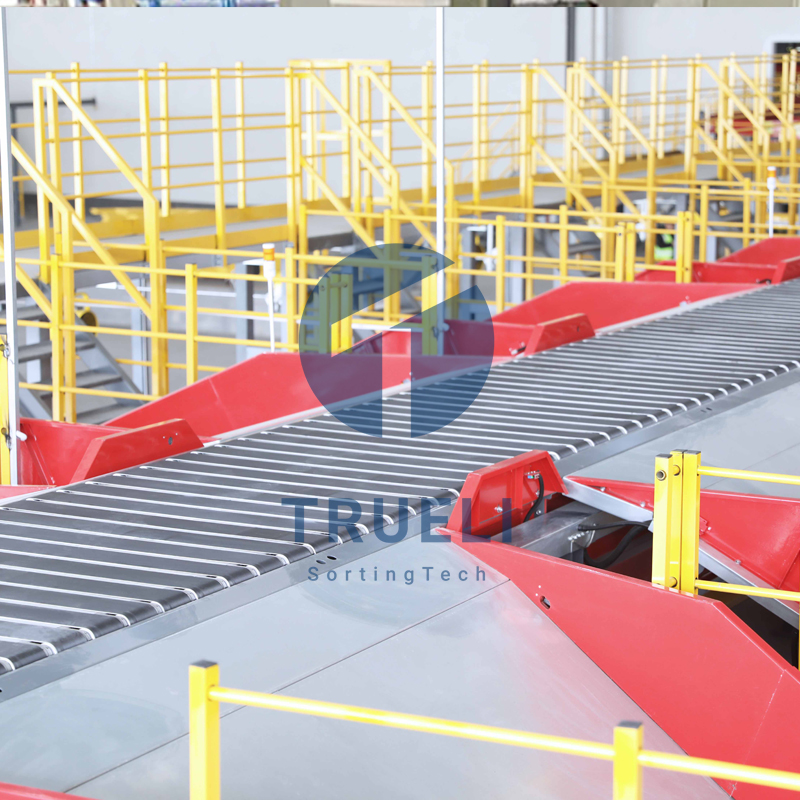1. What is the sorting process?
Sortation is the process of identifying items on a conveyor system and diverting them to a specific destination within an operation, such as different types of packing stations or parcel carrier doors.
While manual sortation relies on human workers to identify and divert items as necessary, automated sortation leverages a variety of technologies, such as barcode scanners and other sensors, to accomplish this without any associated human intervention.
Modern automated sorters vary substantially depending on the underlying technology upon which they are built. Sensors, means of conveyance, and method of diverting can all be tailored to an operation’s specific product handling and throughput needs.
- Benefits of Automated Sortation
By automating and optimizing the low-value and easily repeated task of sortation, it is possible for an order fulfillment operation to realize substantial benefits, including:
Less walking and double-handling of orders
Fewer growth constraints tied to lack of labor availability
Overall reduced labor costs
Optimized picking strategy
Streamlined packing operations
Improved order accuracy
Faster order processing
Increased order volumes without adding proportional labor
Fewer accidents
Less broken or damaged product
More efficient use of floor space
Possibility of reclaiming unused vertical space (depending on model)
- Sortation System Applications
When it comes to sortation, picking tends to get all of the attention, and with good reason—automated sortation can go a long way in optimizing your order fulfillment system for the modern realities your operation is facing. But that isn’t the only application it is well-suited for. Below we discuss how automated sortation can be used (including picking) in the order fulfillment environment.
- Receiving
Leveraging automated sortation during the receiving process can help you more efficiently process inventory as it enters your operation, granting you increased inventory visibility. Some receiving-focused applications sortation can augment include:
Return Processing: If enough information about the return can be provided (referenced by the Carton ID barcode), cartons can be sorted to specific stations where the return can be handled most efficiently. Once the disposition of the goods has been performed, items can be automatically sorted out for destruction, return to vendor, putaway into stock, or immediately sorted to a location where the product will be used to fill an open order.
Putaway: As mentioned above, a receiving system is a very efficient method of removing floor-loaded cases from the trailer and then sorting the cartons by SKU so they can be palletized with one touch prior to being put away in reserve storage.
Cross Docking: For just-in-time inventory to active orders in need of consolidation. Ready to ship product such some hard goods can be routed directly to shipping, and individual units can be conveyed in a tote to an order consolidation area.
When considering a sortation solution for your receiving needs, you will need to know the following:
The number of inbound trailers that will need to be unloaded simultaneously and
The number of destinations that will be required to sort out the inbound work for putaway or other processing.
This information will help you determine the best equipment and system layout for your needs.
- Picking & Packing
Order picking and packing are the most labor-intensive tasks that any order fulfillment operation will face. For operations using manual picking strategies, this means that human workers are walking the floor to pick items and put them into orders for processing, which is expensive—in terms of both time and wages.
Medium- and high-volume fulfillment operations can leverage an automated sortation system to augment or completely change their picking strategy to help your workers become more productive. If workers are no longer concerned with sorting or transporting orders, they can stay within a particular aisle or zone, waste less time traveling, and complete more picks within the same amount of time, leaving the sorter to direct the flow of goods where it needs to go for packing and shipping.
High-volume ecommerce operations can pick individual or full cases of units for many different orders in large batches (100-200 orders per batch) and let a unit sorter divert and consolidate them into discrete orders. Once the last item arrives for an order the system will alert an operator to pack the order and send it to shipping.
Similarly in a medium volume operation, orders can be picked into totes and then a sorter can be used to consolidate multiple totes of an order from different portions of the picking area. These will arrive in the same pack station so that they can be packed into the same carton, or to route split case orders to specific types of packing tasks based on the type of shipping container required, ie. polybags, cartons, gift wrapping, etc.
When considering a sortation solution to leverage for your picking and packing needs, you should be aware of the following:
Minimum and maximum product and shipping carton sizes and weights
The number of packing stations required
The different types of packing stations required (repackaging, bagging, gift-wrapping, labeling, etc.).
- Shipping
After orders have been picked, and packed, the next logical step is for them to be shipped. An effective sortation system used at this critical step can allow orders to skip parcel hubs—called zone skipping—by presorting groups of orders that allow for fewer days in transit and an all around shorter total order cycle time and a lower freight cost, which means more orders processed in a given timeframe and happier customers.
Orders can be sorted by LTL, small package, or carrier/service method. When selecting a sorter for your shipping needs, you should know the minimum and maximum size and weight of products to be handled, the volume of your peak hour of shipping, and the number of pallet build locations required for your operation or the number of trailers that will need to be loaded simultaneously.





